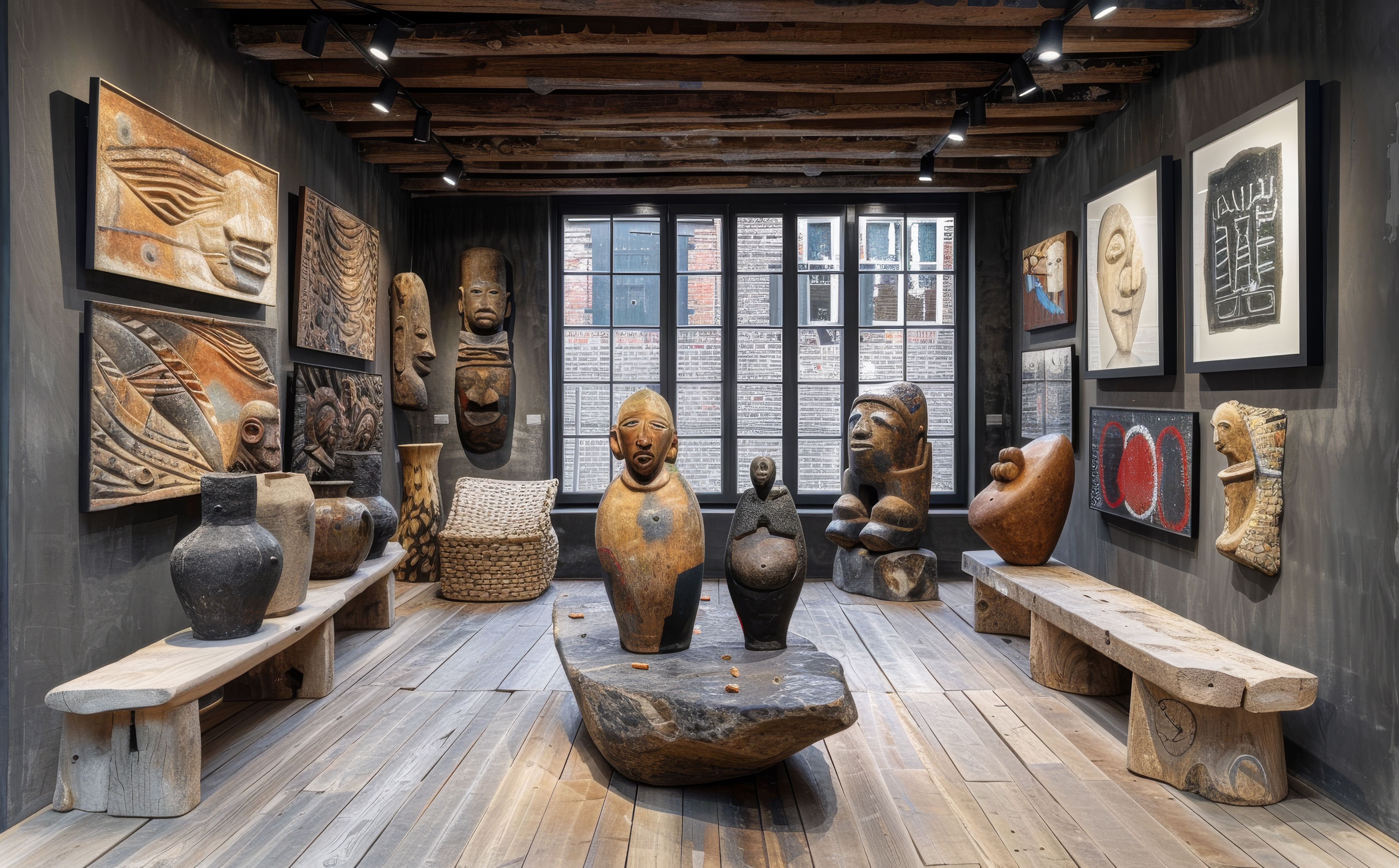Using Nano-FT-IR Spectroscopy to Study Central African Wooden Sculptures
A study from Vanderbilt University used nano Fourier-transform infrared (FT-IR) spectroscopy to study central African wooden sculptures and learn more about material composition.
In archaeology and cultural heritage, preserving valued artifacts is of utmost importance. Protecting the integrity of these objects allows researchers and scientists to study them to learn about the ancient past, including what the artifacts were made of and what they were used for.
Cultural heritage is a burgeoning field. Artifacts under study require meticulous care, especially when it comes to analyzing material composition. Any sample extracted for study must be minimal to maintain the artifact’s integrity (1). Ideally, the techniques employed should be nondestructive to ensure that samples can be reused for future analyses (1).
Gallery filled with African art and sculptures. Generated with AI. | Image Credit: © Анна Терелюк - stock.adobe.com

The Journal of Raman Spectroscopy capitalized on the growing number of researchers conducting investigations in this field, highlighting several studies that used Raman spectroscopy (2). As a nondestructive technique, Raman spectroscopy is best suited for this type of analysis, especially when coupled with portable X-ray fluorescence (pXRF) spectroscopy (2).
However, despite advancements in the field, there are still limitations with optical detection limits. Because they are limited by the diffraction limit of light, spatial resolution is constrained (1). As a result, this is a challenge because many material-specific properties essential for identification rely on molecular vibrations and conductivity, necessitating spectral analysis in the infrared (IR) spectrum (1).
A recent study led by Joshua Caldwell at Vanderbilt University, published in ACS Photonics, explored a new approach that is designed to alleviate the above concerns, involving a spectroscopic technique called nano Fourier-transform infrared (nano-FT-IR) spectroscopy.
Characterized by its long wavelengths, infrared (IR) light complicates the identification process, especially when sample compositions vary at the nanometer scale (1). Nano-FT-IR is a solution to this problem because it allows for FT-IR-like detection at a subdiffraction spatial resolution of approximately 20 nanometers (1).
Like Raman spectroscopy, nano-FT-IR is also nondestructive. It minimizes the need for extensive sample extraction, allowing individual samples to be examined using multiple complementary methods (1). To demonstrate the feasibility of nano-FT-IR spectroscopy in cultural heritage applications, Caldwell and his team used the technique to analyze surface coatings from African wood sculptures. These sculptures present a significant challenge because of the submicrometer scale of some of their layers, which complicates the interpretation of cross-sectional compositions using established techniques (1).
Caldwell’s team demonstrated that nano-FTIR could effectively identify functional groups corresponding to various classes of organic coatings and inorganic pigments through point spectra analysis (1). They showed that Nano-FT-IR offers a promising alternative for collecting IR spectra with minimal sample preparation, addressing the limitations of far-field vibrational spectroscopies (1). Traditional techniques come with challenges, such as a diffraction limit and complex sample preparation, which can compromise data quality and layer stratigraphy in cultural heritage research (1). Nano-FTIR's high-resolution, label-free chemical identification allows for precise analysis of thin material layers in heterogeneous mixtures, preserving the integrity of the sample while providing detailed material composition (1).
Furthermore, the research conducted at Vanderbilt University shows how the integration of advanced technology with art conservation demonstrated the interdisciplinary approach required to tackle complex problems (1). It also underscores the importance of ongoing innovation in preserving our cultural heritage for future generations. Because of this study, researchers and those specialized in handling cultural artifacts have access to a study that could aid them in their work.
References
(1) Diaz-Granados, K.; Price, R.; McBride, J. R.; Moffett, D.; Kavich, G. M.; Caldwell, J. D. Identification of Surface Coatings on Central African Wooden Sculptures Using Nano-FTIR Spectroscopy. ACS Photonics 2024, ASAP. DOI: 10.1021/acsphotonics.4c00320
(2) Workman, Jr., J. Raman Spectroscopy Transforms Cultural Heritage and Forensic Analysis. Spectroscopy. Available at: https://www.spectroscopyonline.com/view/raman-spectroscopy-transforms-cultural-heritage-and-forensic-analysis (accessed 2024-07-29).
Newsletter
Get essential updates on the latest spectroscopy technologies, regulatory standards, and best practices—subscribe today to Spectroscopy.
How Analytical Chemists Are Navigating DOGE-Driven Funding Cuts
July 14th 2025DOGE-related federal funding cuts have sharply reduced salaries, lab budgets, and graduate support in academia. Researchers view the politically driven shifts in priorities as part of recurring systemic issues in U.S. science funding during administrative transitions. The impact on Federal laboratories has varied, with some seeing immediate effects and others experiencing more gradual effects. In general, there is rising uncertainty over future appropriations. Sustainable recovery may require structural reforms, leaner administration, and stronger industry-academia collaboration. New commentary underscores similar challenges, noting scaled-back graduate admissions, spending freezes, and a pervasive sense of overwhelming stress among faculty, students, and staff. This article addresses these issues for the analytical chemistry community.